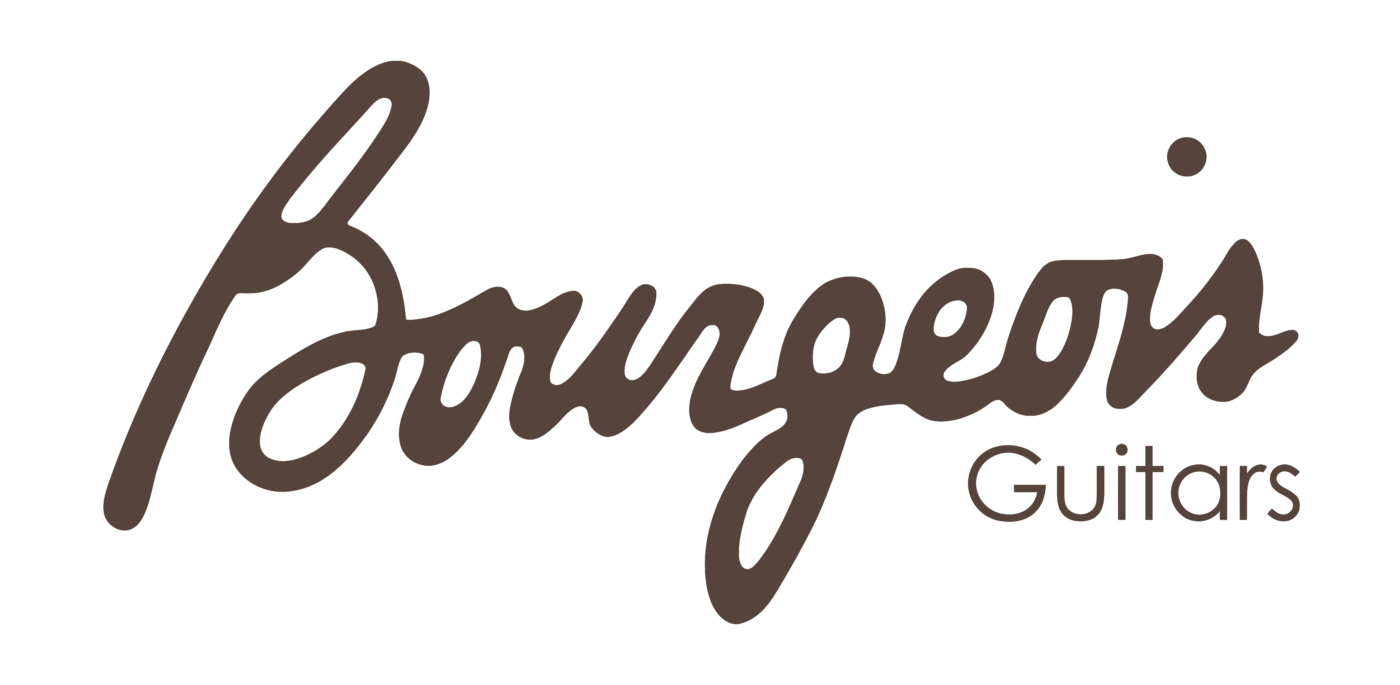Review & Articles, News, Homepage News
From Dana’s Bench: How Torrefied Woods Benefit Bourgeois Guitars
The Vikings never reached the stony shores of Down East Maine. But one revolutionary wood-manipulating technology that helped them explore the North is impacting how we make guitars here in Lewiston.
What is torrefied wood?
Torrefied wood is wood changed chemically by intentional, controlled heat treatment. The nimble and seaworthy Viking ships that raided the British Isles, Iceland, Greenland, and beyond could do so, in part, because they utilized revolutionary, nearly waterproof, heat-treated planks that were lighter and stronger than raw timbers.
Like their ancestors over millennia, the Norsemen also used primitive torrefaction to harden the sharpened points of wooden weapons. The new technology gave them an undeniable edge as they expanded.
That ancient practice evolved over centuries, and more uses for heat-treated wood emerged. By the 1960s, the Finns created a torrefaction industrial processing system to roast raw oak floorboards in a temperature-controlled, anaerobic environment to manufacture stable flooring products that resisted shrinkage and warping.
“Torrefaction is the same process as making charcoal; wood is heated beyond its combustion point but denied oxygen,” Dana explains. “Without oxygen, the wood itself can‘t combust. The gases coming off the wood combust. If you heat the wood long enough, it becomes charcoal. The trick for guitar wood is to heat the wood at just the right temperature for the right amount of time. Structural tests have revealed an ideal ‘recipe’ of heat and duration needed for each kind of wood.”
Torrefaction and your Bourgeois guitar
So how does this impact how your new Bourgeois guitar sounds? The torrefaction process alters the wood’s cellular structure as water and other volatile elements, including tars, sugars, oils, etc., are gasified and mineralized. In response, the cells in the wood morph from an open to a closed state. Heat-treated tonewood becomes almost opaque; modern kiln-dried tonewoods cannot replicate a beneficial feature.
Dana explains, “Viscous materials damp vibration; wood vibrates more freely after viscous materials have mineralized and converted into solids. The closing of cells prevents wood from absorbing as much atmospheric moisture, resulting in improved dimensional stability. These transformations occur naturally in tonewoods but take decades to complete. Torrefaction accelerates the natural aging process, but it must be done properly.”
Different tonewoods provide different sounds for guitars
But properly roasted Finnish oak flooring boards, although they may line the elegant floors of many an accomplished guitarist’s homes near the Arctic Circle, are seldom used to make great acoustic guitars. Compared to stolid, uninspiring oak floor planking, tonewoods intended for the world’s finest acoustic guitars, such as a Bourgeois, are a different plate of lefse, as the Norwegians might say, when it comes to torrefaction.
“Adirondack spruce requires a different temperature and duration than oak. Oak flooring is actually the largest commercial use of torrefied wood. When you put a floor in a new building, you don‘t want it to expand and contract. Torrefaction solves that problem,” Dana explains, adding cautiously, “You have to be careful with (torrefied) spruce. Tests show that as temperatures increase, spruce will become slightly stiffer; up until a point. Beyond that point, the stiffness crashes. If you cook it long enough, the cellulose structure will break down. It‘s better to undercook than overcook.”
So what does this wood-cooking process mean for a Bourgeois Guitars guitar or mandolin?
Torrefaction, Dana points out, both ages the appearance of the wood and imparts a distinctly dry or ‘vintage’ tone.
“Torrefied wood has a honeycomb-like cellular structure resembling that of timber that‘s had many decades to transform. If properly treated, its stiffness-to-weight ratio improves,” Dana says. “This results in an enhanced velocity of sound—the quickness with which sound travels through the wood—which produces the vintage-like tone.”
Bourgeois Guitars is always experimenting and improving for the best sound
But torrefaction is no magic bullet – nor flame-hardened Viking spearpoint, for that matter. Only when used in a proper guitar design that takes into account the different qualities of torrefied wood can Bourgeois Guitars take the best advantage of the unique qualities of torrefied tonewoods.
“Torrefaction can‘t make a bad piece of wood sound good. For use in guitars, the process has to start with a selection of fine tonewood,” Dana says flatly. “I still have the first torrefied guitar we made back in 2012. I don‘t think it sounds as good as it should because we are still learning. I‘ve learned to compare samples before and after torrefaction as a litmus test of sorts. Before we use a piece of torrefied wood, we cut off a little sliver to examine its fibers; longer fibers will have more integrity.”
Some in-demand tonewoods respond better than others to the process, he adds. “We feel on safe ground with torrefied Adirondack. It tends to be pretty tough, generally with better long-grain integrity than the European species commonly used in guitar-building.”
“A treated Adirondack top is, after all, just another tonewood; the thing that matters is what you do with it,” Dana notes. “Roasted Alaskan old-growth Sitka is an under-appreciated favorite in the Lewiston shop. The different qualities of the roasted wood, so different from those in the raw timbers, also challenged his luthier’s heart.”
“To get the vibe I was looking for, I ended up modifying my approach to voicing and developed an entirely new finish,” Dana says enthusiastically about the innovative material. “The combined result isn‘t a substitute for a great vintage guitar – nor will it make people stop playing new guitars with untreated tops. It‘s entirely new, yet partially old; totally different and overwhelmingly musical.”

